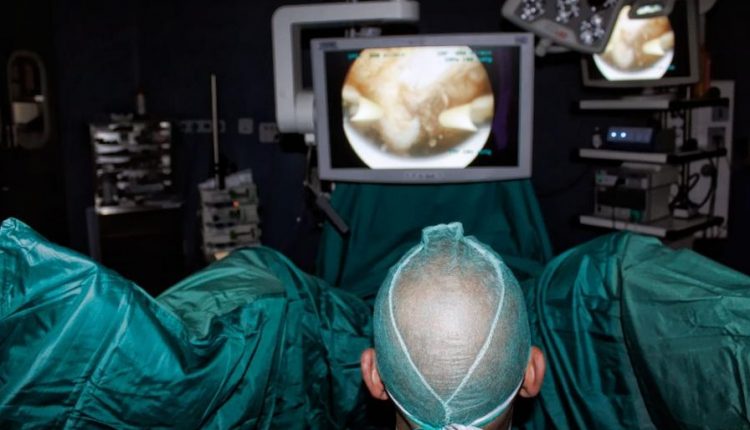
Diagnostic and operative hysteroscopy: preparation and importance of gynaecological examinations
Hysteroscopy is a mini-invasive endoscopic technique that allows us to see inside the uterine cavity without having to use a scalpel, through a thin instrument called a hysteroscope, either directly or through a monitor connected to a special camera placed on the hysteroscope
Hysteroscopy, which also includes the study of the fallopian tubes, is called “hysterosalpingoscopy”
The hysteroscope is introduced into the uterus through the vagina. Although the method can be slightly uncomfortable, it eliminates as much anxiety, fear and above all pain for the patient as possible.
Diagnostic hysteroscopy and operative hysteroscopy
With a diagnostic hysteroscopy the doctor ‘limits’ himself to observing the uterine tissue, while with an operative hysteroscopy he can observe the tissue and perform minor surgical interventions, using miniaturised instruments, connected to the hysteroscope and controlled from the outside.
An operative hysteroscopy allows problems such as adhesions and small polyps to be resolved quickly, safely, with shorter recovery times than open surgery and without general anaesthesia.
Hysteroscopy: when can it be useful?
Diagnostic hysteroscopy becomes useful in the case of abnormal uterine bleeding, both in childbearing age and especially after menopause, and it is possible to detect uterine malformations such as septa, pathologies of the uterine cavity such as polyps, fibroids, hyperplasia, malignant tumours and pathologies of the fallopian tubes.
It is very useful in detecting pathologies and conditions that cause infertility.
It can take biopsies of the affected tissue: the sample is then sent to the pathologist who clarifies the nature of the lesion.
How do you prepare for a hysteroscopy?
The examination does not require special preparations, fasting or any kind of anaesthesia or drug preparation.
Antibiotics may only be used as prophylaxis in patients with valvular heart disease.
The patient may continue to take her medication regularly, taking care to advise when booking the examination if she uses anticoagulant medication.
Is it painful?
If hysteroscopy is performed as an outpatient procedure without anaesthesia, instruments with a thinner diameter (usually between 2 and 5 mm) are used, compared to those used in the operating theatre.
The cervical canal and the uterine cavity are dilated through the infusion of saline solution through the vagina: this dilation of the cervical canal is necessary to allow the passage of the hysteroscope and the vision of the uterine cavity.
The uterus responds to this dilation by contracting as during a menstruation and this often causes the patient a pain similar to menstrual cramps, which, however, disappears on its own within a few minutes.
Hysteroscopy with anaesthesia in the operating theatre
In 5% of patients, the examination performed in the operating room evokes more significant pain.
In these cases, as soon as the patient requests it, the doctor immediately suspends the procedure and schedules it under full sedation, but no longer in the outpatient clinic, but in the operating room with anaesthesia.
Is hysteroscopy dangerous?
It is an examination where complications are rare and are generally related to the possibility of injury to the examined structures by the hysteroscope, resulting in bleeding.
Hysteroscopic polypectomy
Uterine polyps (cervical, exocervical, endometrial…) are present in 24% of women, often asymptomatically, and are the main cause of atypical uterine bleeding (i.e. abnormal bleeding from the uterus).
They can become cancerous in 0.2-9 % of cases depending on whether the woman is in her childbearing years or menopausal.
Endocervical polyps are referred to as ‘sentinel polyps’ because in a quarter of cases they are a telltale sign of the presence of another cervical polyp behind them or of an endometrial polyp inside the uterus.
The treatment of choice for a cervical and endometrial polyp, even an asymptomatic one, is the resection (removal) of the polyp by operative hysteroscopy, a technique known as hysteroscopic polypectomy and which can be performed in an outpatient or operating room depending on many factors such as the number and size of the polyps.
Read Also:
Emergency Live Even More…Live: Download The New Free App Of Your Newspaper For IOS And Android
Uterine Fibroid Embolization: What It Is And How To Treat It
The Use Of Outpatient Hysteroscopy For Early Diagnosis
Utero-Vaginal Prolapse: What Is The Indicated Treatment?
Pelvic Floor Dysfunction: What It Is And How To Treat It
Pelvic Floor Dysfunction: Risk Factors
Salpingitis: Causes And Complications Of This Fallopian Tube Inflammation
Hysterosalpingography: Preparation And Usefulness Of The Examination
Gynaecological Cancers: What To Know To Prevent Them
Total And Operative Hysterectomy: What They Are, What They Involve
Vulvodynia: What Are The Symptoms And How To Treat It
What Is Vulvodynia? Symptoms, Diagnosis And Treatment: Talk To The Expert
Accumulation Of Fluid In The Peritoneal Cavity: Possible Causes And Symptoms Of Ascites
Accumulation Of Fluid In The Peritoneal Cavity: Possible Causes And Symptoms Of Ascites
What’s Causing Your Abdominal Pain And How To Treat It
Pelvic Varicocele: What It Is And How To Recognise The Symptoms
Can Endometriosis Cause Infertility?
Transvaginal Ultrasound: How It Works And Why It Is Important
Candida Albicans And Other Forms Of Vaginitis: Symptoms, Causes And Treatment
What Is Vulvovaginitis? Symptoms, Diagnosis And Treatment
Vaginal Infections: What Are The Symptoms?
Chlamydia: What Are The Symptoms And How To Treat It
Chlamydia, Symptoms And Prevention Of A Silent And Dangerous Infection
Miscarriage: Causes, Diagnosis And Treatment



